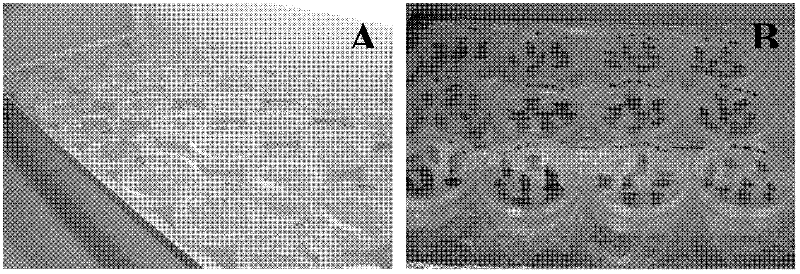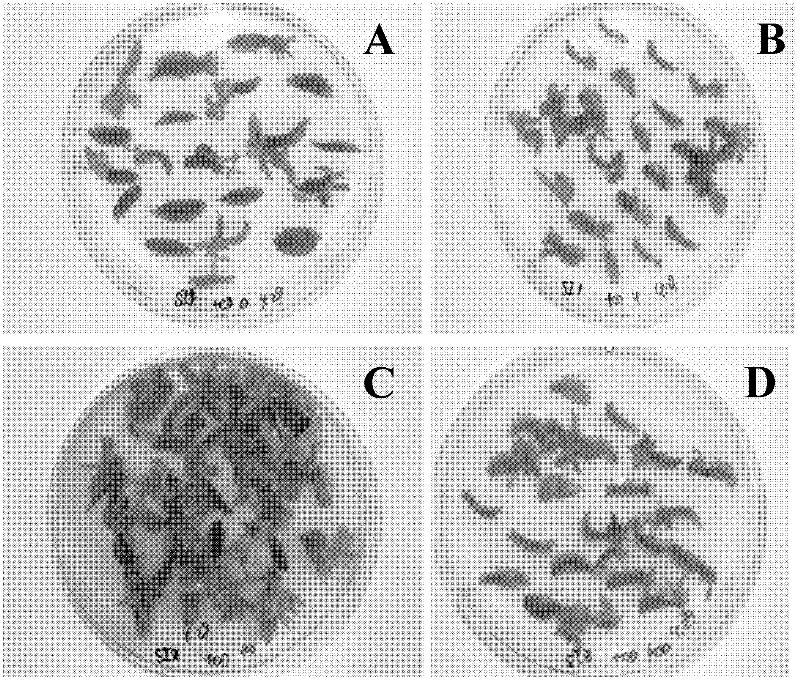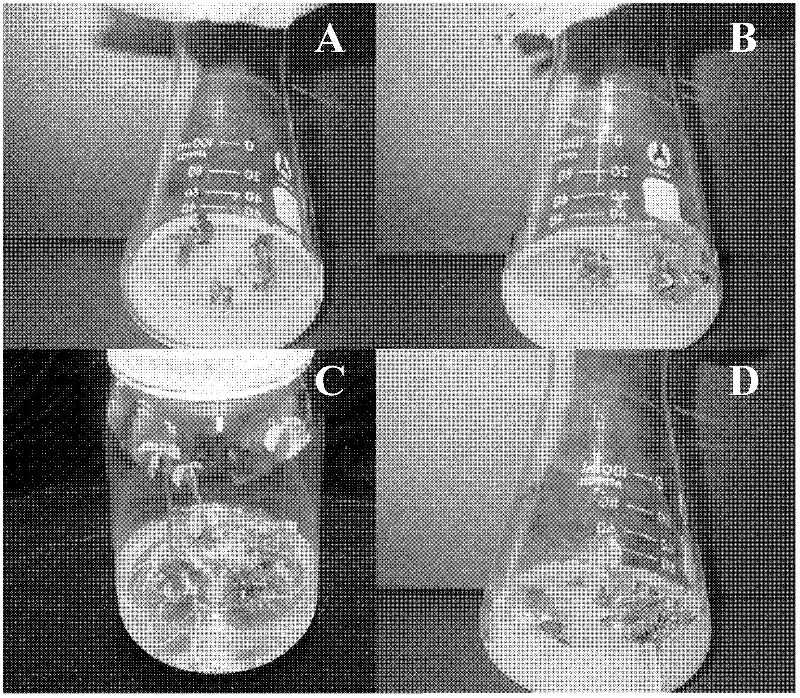Tissue culture method for promoting differentiation and regeneration of soybean cotyledon node explant by using nano material
A technology of nanomaterials and tissue culture, applied in botany equipment and methods, plant regeneration, horticultural methods, etc., can solve the unstudied problems of the influence of carbon nanotubes on the differentiation and growth of soybean cotyledonary node explants, and achieve organizational Improve the culture efficiency, the effect is obvious, and the effect of the high-efficiency tissue culture system
- Summary
- Abstract
- Description
- Claims
- Application Information
AI Technical Summary
Problems solved by technology
Method used
Image
Examples
Embodiment 1
[0023] Seeds for testing: soybean variety Zhonghuang 35, 1500 grains.
[0024] Nanomaterials: carbon nanotubes (NM) (single wall)
[0025] Medium formula:
[0026] Seed germination medium: B5+ sucrose 20g / L+ agar 7.5g / L
[0027] Differentiation medium
[0028] SINM0: B5+6-BA1.50mg / L+ sucrose 30g / L+ agar 7.5g / L
[0029] SINM4: B5+6-BA1.50mg / L+sucrose 30g / L+agar 7.5g / L+NM 4mg / L
[0030] SINM40: B5+6-BA1.50mg / L+sucrose 30g / L+agar 7.5g / L+NM 40mg / L
[0031] SINM400: B5+6-BA1.50mg / L+sucrose 30g / L+agar 7.5g / L+NM 400mg / L
[0032] regeneration medium
[0033] SENM0:
[0034] B5+ZT1mg / L+IAA0.1mg / L+GA 3 0.5mg / L+L-pyrogltamic acid100mg / L+asparagines
[0035] 50mg / L+ sucrose 30g / L+ agar 7.5g / L
[0036] SENM4:
[0037] B5+ZT1mg / L+IAA0.1mg / L+GA 3 0.5mg / L+L-pyrogltamic acid100mg / L+asparagines
[0038] 50mg / L+sucrose 30g / L+agar 7.5g / L+NM 4mg / L
[0039] SENM40:
[0040] B5+ZT1mg / L+IAA0.1mg / L+GA 3 0.5mg / L+L-pyrogltamic acid100mg / L+asparagines
[0041] 50mg / L+sucrose 30g / ...
PUM
 Login to View More
Login to View More Abstract
Description
Claims
Application Information
 Login to View More
Login to View More - R&D
- Intellectual Property
- Life Sciences
- Materials
- Tech Scout
- Unparalleled Data Quality
- Higher Quality Content
- 60% Fewer Hallucinations
Browse by: Latest US Patents, China's latest patents, Technical Efficacy Thesaurus, Application Domain, Technology Topic, Popular Technical Reports.
© 2025 PatSnap. All rights reserved.Legal|Privacy policy|Modern Slavery Act Transparency Statement|Sitemap|About US| Contact US: help@patsnap.com



